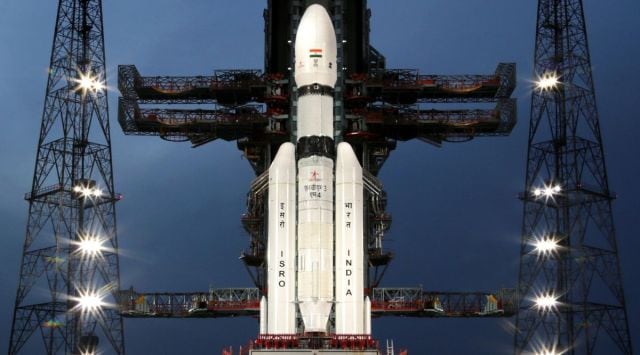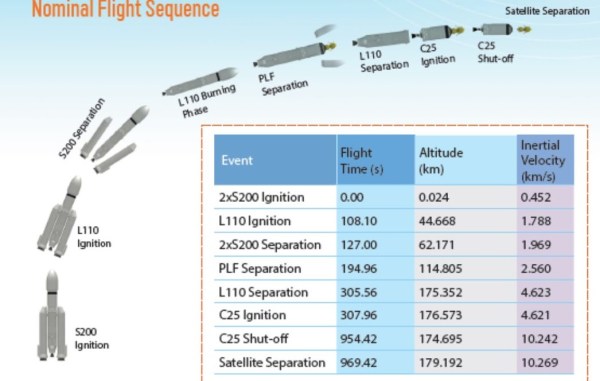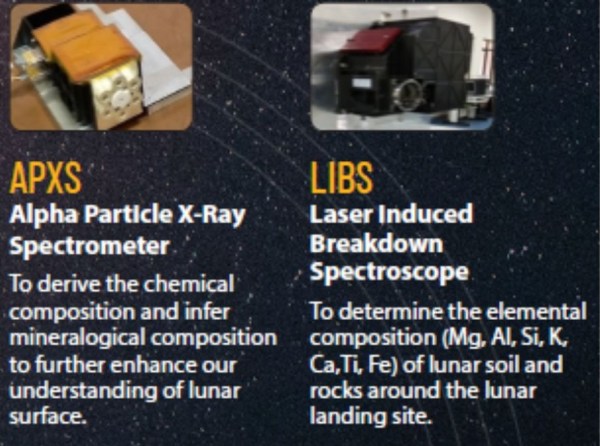ISRO’s Chandrayaan-3: From launch to landing, a complete guide
The countdown for ISRO's Chandrayaan-3 mission has begun. Here is everything you need to know about LVM-3, the spacecraft, its payloads and what will happen during the mission.
 The fully-integrated Chandrayaan-3 spacecraft and LVM-3 at the launchpad in Sriharikokta. (ISRO/Twitter)
The fully-integrated Chandrayaan-3 spacecraft and LVM-3 at the launchpad in Sriharikokta. (ISRO/Twitter) The Indian Space Research Organisation’s second attempt at a soft landing on the Moon, Chandrayaan-3, is set to launch at 2.30 PM IST on Friday, July 14. Here is a complete guide to the ISRO mission, from launch to landing.
Chandrayaan 3 mission objective
The Chandrayaan-3 spacecraft is carrying many science payloads that will help scientists here on Earth understand the Moon better. But the main objective of the mission is to successfully carry out a soft landing on the Moon.
This is the same objective as the mission’s predecessor, Chandrayaan-2, which failed during the last leg of the mission, with the Vikram lander crashing on to the lunar surface. If ISRO gets it right with Chandrayaan-3, India will be just the fourth country to do a soft landing on the Moon after the United States, the erstwhile Soviet Union, and China.
Beresheet, an Israeli private company-led mission failed to do the same before Chandrayaan-2’s launch. Hakuto-R, a mission led by Japanese private space company Ispace also failed to complete a soft landing on the Moon earlier this year.
Chandrayaan 3: LVM-3 rocket
The Chandrayaan-3 mission will be launched into space by the Launch Vehicle Mark-III, (LVM-III) which was earlier known as the GSLV (Geosynchronous Satellite Launch Vehicle) Mark-III. This will be the fourth operational mission for the launch vehicle.
 The flight sequence of the Chandrayaan-3 mission. (ISRO)
The flight sequence of the Chandrayaan-3 mission. (ISRO)
It is powered by two S2000 solid rocket boosters that will provide the thrust required for takeoff. After the solid boosters separate from the launch vehicle, it will be powered by L110 liquid stage. After the separation of the liquid stage, the CE25 cryogenic stage will take over.
Chandrayaan-3 mission modules
The main Chandrayaan-3 spacecraft consists of three modules—the lander module, a propulsion module and a rover module. The propulsion module will carry the spacecraft from an injection orbit around Earth till a 100-kilometre lunar orbit. While that is its primary function, the propulsion module will also be carrying a payload that will take spectral and polarimetric measurements of Earth from a lunar orbit.
 The scientific payload carried by the lander. (ISRO)
The scientific payload carried by the lander. (ISRO)
 The rover’s scientific payloads. (ISRO)
The rover’s scientific payloads. (ISRO)
The lander will be carrying the RAMBHA-LP, ChaSTE and ILSA scientific payloads while the rover will be carrying APXS and LIBS. The lander weighs approximately 1,750 kilograms including the rover, which weighs 26 kilograms by itself. The lander measures about 2 by 2 by 1.1 metres while the rover measures about 91 by 75 by 39 centimetres. Both the rover and lander have been designed to operate on the Moon for about 14 days.








